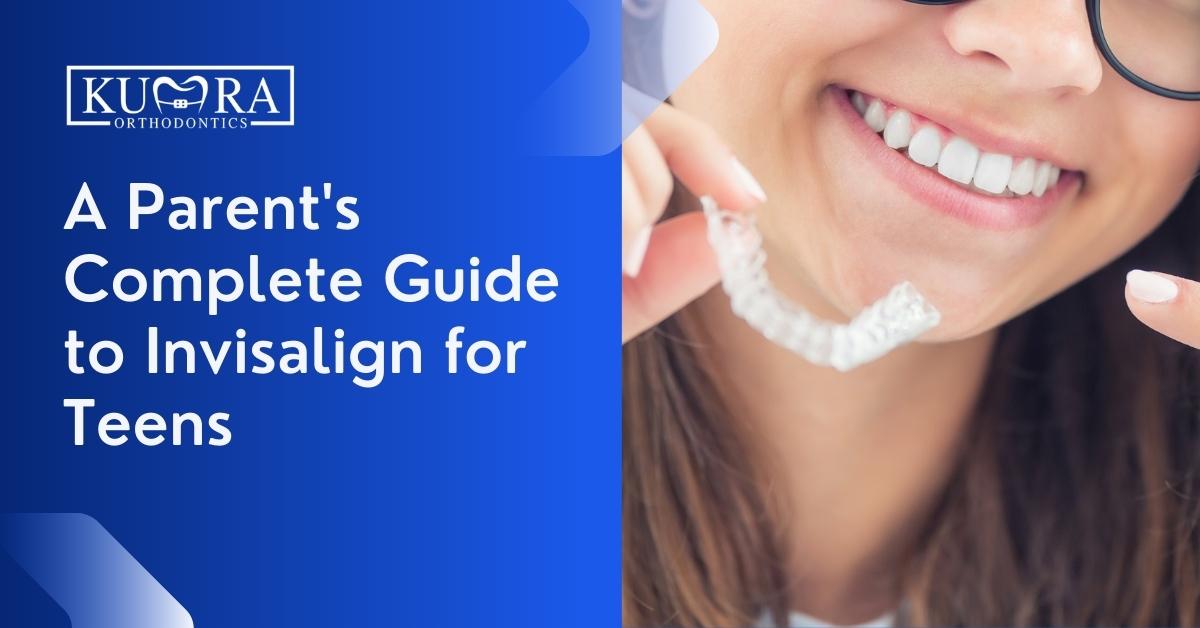If you’re a teenager who wants to straighten your teeth, you may be wondering what your options are. While traditional metal braces have been the go-to treatment for many years, there is now a more discreet option available: Invisalign.
In this comprehensive guide, we’ll explore the benefits of Invisalign for teenagers, providing practical guidance and insights on how to straighten teeth with confidence.
What is Invisalign?
Invisalign is a type of clear aligner that is used to straighten teeth. Unlike traditional braces, which use metal brackets and wires, Invisalign aligners are made of a clear plastic material that is virtually invisible when worn. Invisalign treatment involves wearing a series of custom-made aligners that gradually shift your teeth into the desired position.
One of the main differences between Invisalign and traditional braces is that Invisalign aligners are removable. This means that you can take them out when you eat, brush your teeth, and floss. It also means that there are no food restrictions with Invisalign, as there are with traditional braces.
Not everyone is a good candidate for Invisalign, however. In general, Invisalign is best suited for people who have mild to moderate orthodontic issues, such as crooked teeth or gaps between teeth. If you have more severe orthodontic issues, traditional braces may be a better option.
Read More: How Old Do You Have to Be to Get Invisalign?
What Can Invisalign Correct?
Invisalign is versatile, designed to treat a variety of dental concerns. From mild cases of crooked and crowded teeth to more complex dental issues, Invisalign can be an excellent treatment tool. It’s important to consult with an orthodontist to understand the types of treatment that Invisalign can provide for your teen.
The Benefits of Teenager Invisalign
There are many benefits to choosing Invisalign over traditional braces. Here are just a few:
Improved self-esteem and confidence
One of the biggest benefits of Invisalign is that it is virtually invisible when worn. This means that you can straighten your teeth without feeling self-conscious about your appearance. This can be especially important for teenagers, who may be more sensitive about their appearance than adults.
More comfortable than traditional braces
Invisalign aligners are made of a smooth, comfortable plastic material that won’t irritate your cheeks or gums like traditional braces can. This means that you can wear them for longer periods of time without discomfort.
Easier to maintain oral hygiene
Because Invisalign aligners are removable, it is easier to maintain good oral hygiene during treatment. You can brush and floss your teeth as you normally would, without having to work around brackets and wires.
No food restrictions
With traditional braces, there are certain foods that you should avoid, such as hard or sticky foods that can damage the brackets and wires. With Invisalign, there are no food restrictions, as you can simply remove the aligners when you eat.
Needing an orthodontic appointment?
Visit Kumra Orthodontics Washington DC or Kumra Orthodontics Stafford, VA, and request an appointment with us!
The Teenager Invisalign Treatment Process
If you’re interested in Invisalign, the first step is to schedule an initial consultation with an orthodontist. During this consultation, the orthodontist will evaluate your teeth and determine whether Invisalign is a good option for you.
If you are a good candidate for Invisalign, the orthodontist will create a personalized treatment plan for you. This will involve taking impressions of your teeth, which will be used to create your custom-made aligners.
Once your aligners are ready, you will begin wearing them. You will typically wear each set of aligners for about two weeks, before moving on to the next set in the series. You will need to wear your aligners for 20-22 hours per day, removing them only to eat, brush your teeth, and floss.
Throughout your treatment, you will have regular checkups with your orthodontist to ensure that your teeth are moving as they should be. You may also receive new sets of aligners during these checkups.
Maintaining Oral Hygiene with Teenager Invisalign
Maintaining good oral hygiene during Invisalign treatment is important to ensure that your teeth and gums stay healthy. Here are some tips for keeping your teeth and aligners clean:
- Brush and floss your teeth after every meal, before putting your aligners back in.
- Clean your aligners with a soft-bristled toothbrush and mild soap or Invisalign cleaning crystals.
- Avoid drinking sugary or acidic drinks while wearing your aligners, as these can cause tooth decay and damage the aligners.
- Use a fluoride mouthwash to help prevent cavities.
Contact Kumra Orthodontics to Learn More About Invisalign for Teens
Invisalign is a great option for teenagers who want to straighten their teeth without feeling self-conscious about their appearance. With its many benefits, including improved self-esteem, comfort, and ease of maintenance, Invisalign is a great alternative to traditional braces.
If you’re considering Invisalign, schedule a consultation with Kumra Orthodontics to see if it’s the right choice for you. Our experienced team will guide you through every step, ensuring optimal results with Invisalign. With dedicated support, top-notch care, and a commitment to good oral hygiene, we’ll help you achieve the smile you’ve always wanted. Let us be your partner in orthodontic excellence.


